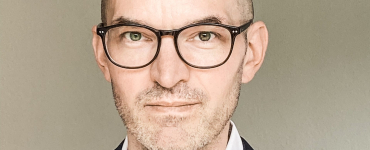The use of rescue drones, telemedicine, 5G and artificial intelligence: digital services and technology are optimising rescue services. On 28 May, the Mobility Competence Group at the eco Office in Cologne will discuss with experts the current state of rescue mobility, what is possible in theory and in practice and which solutions are already being used under the motto “Digitalisation, 5G and AI – How Rescue Mobility Is Changing”. You can register for the event free of charge until 23 May. In the run-up to the event, we spoke to Rupert Heege, former Chief Fire Officer at COREVAS GmbH, about how digital emergency call technologies such as EmergencyEye are improving emergency communication.
Rupert Heege is a trained professional firefighter and paramedic with 26 years of management experience as a former district fire inspector and head of department for fire protection, rescue services, disaster control, civil defence and flood protection. During this time, he was also head of the command and disaster control staff in the Lahn-Dill district and was also responsible for the integrated control centre with home emergency call and medical on-call service. His current focus is on partnership development for the further development of digital technologies in the field of emergency services.
What is behind the EmergencyEye® technology and how does it help to improve emergency communication between control centres, accident victims and first responders?
Rupert Heege: The EmergencyEye technology (EmEye-T) improves the communication between people seeking help and helpers and the emergency response structures or the service sector, e.g. through the use of video information, live translation and various support tools for information or instructions and documentation. This results in improved situation assessment and judgement, as well as better support for laypersons, first responders and specialists.
Your current focus is on partnership development for the further development of digital technologies in emergency services. As an expert, what challenges and opportunities do you see in the digital transformation of the emergency services?
Heege: Digital transformation in the emergency services always goes hand in hand with training and funding issues. The introduction of certain systems takes a long time because tried and tested strategies have been used for a very long time and innovation has not been accepted. With changes in both the population and the workforce, this is now opening up and the use of digital applications and processes is increasingly possible. The use of new technologies and processes opens up opportunities to better categorise complex issues and act in a more targeted way.
Looking to the future of the rescue services: What would you personally like to see?
Heege: Faster and better use of digital developments and opportunities within the population to avoid false deployments and enhance critical events in provision and processing. Digital approaches must enable the efficient and targeted use of resources without overloading them.
Thank you very much for the interview, Mr Heege.




